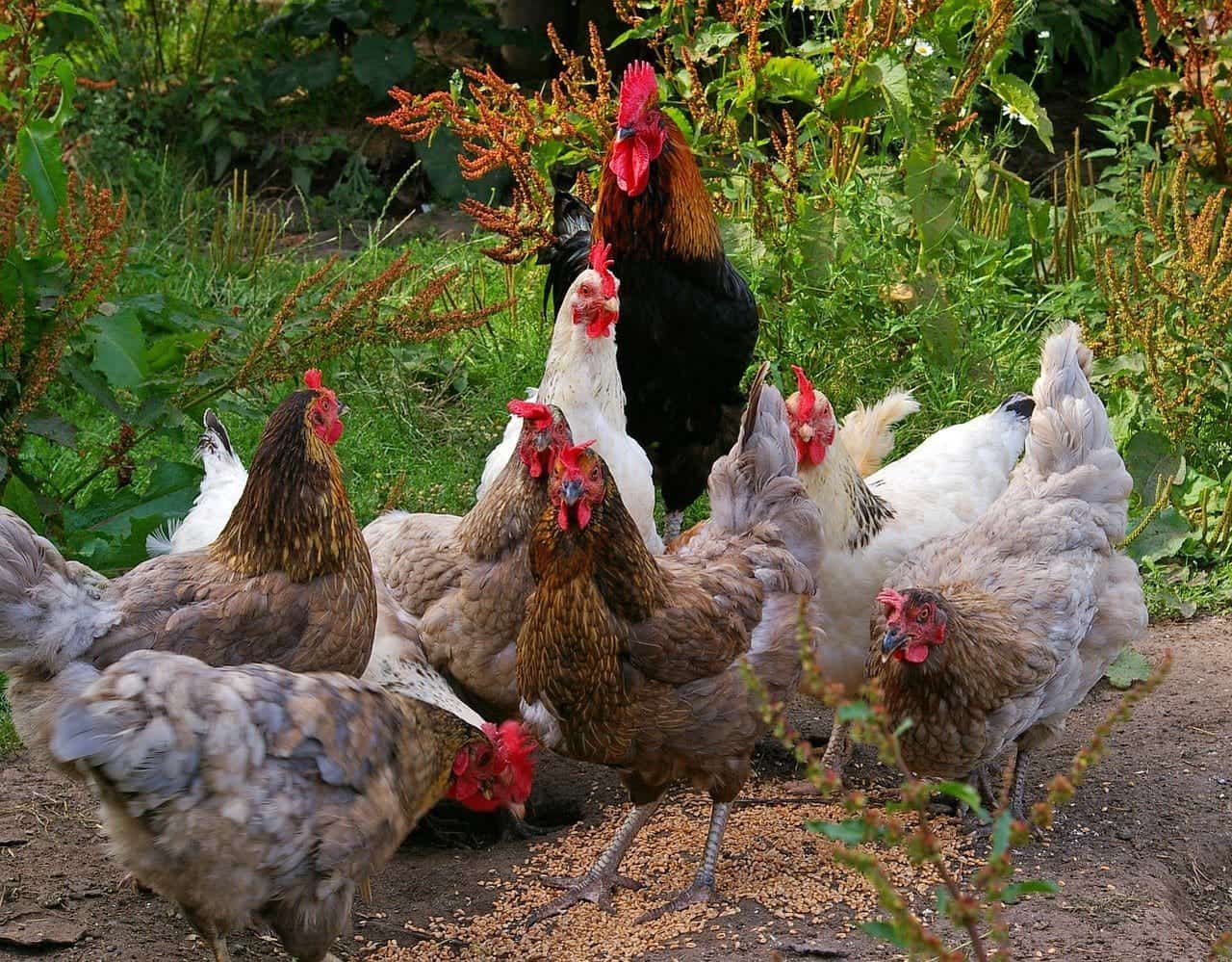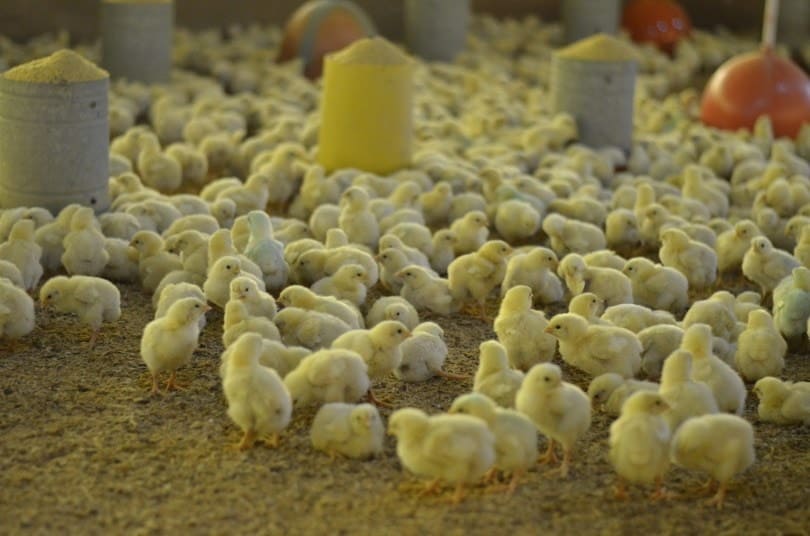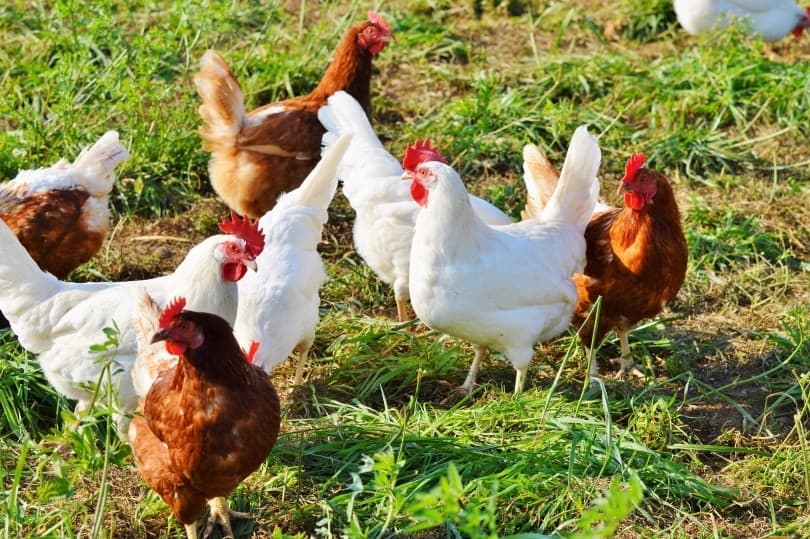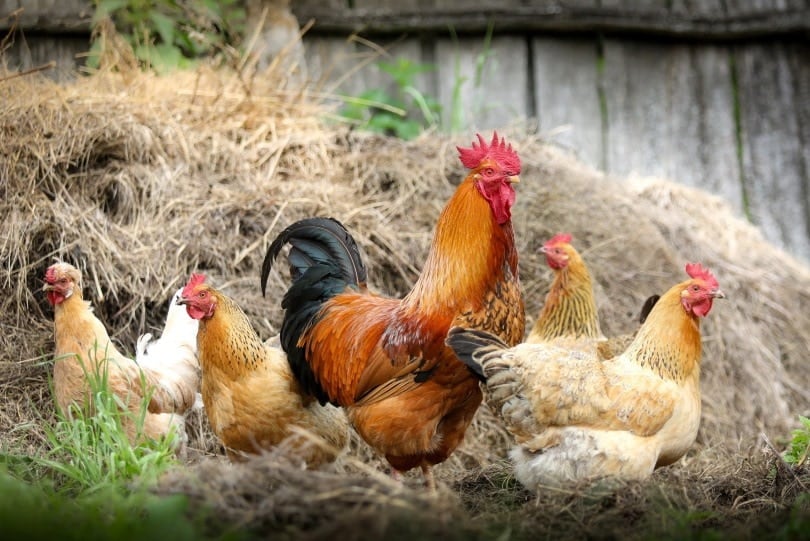Approved by Dr. Luqman Javed
Unless you are hatching chicks from eggs yourself, it can be tough to know the exact age of a chicken. Backyard chickens can live as long as 10 years, but hens usually only lay eggs until they are about 2–4 years old, depending on the breed. Because of this, it is important to learn how to tell the age of a chicken relatively accurately, especially if you are adopting or rescuing full-grown birds.
The best way to tell the age of a chicken is to learn how their physical appearance and behavior changes as they age. A chicken’s feathers, legs, and coloring are good indicators of their age, no matter the breed.

The Life Stages of a Chicken (And How to Tell Them Apart)

Chickens go through several different stages as they grow and develop. Their appearance and their behavior change as they age, allowing you to figure out roughly how old they are once you know what to look for. The approximate life stages of chickens are as follows:
- Chick
- Pullet/Cockerel
- Adult
- Senior
Chick

From the time they hatch until they grow their adult feathers, baby chickens are considered chicks. This life stage generally lasts until your chickens are weaned, at about 4-8 weeks old, depending on the breed.
For the first few weeks of life, chicks are covered in the fluffy fuzz we all think of when we picture baby chickens. After about a week, chicks will begin to develop feathers. Chicks will go through a series of changes as their adult feathers come in. By about a week, their tails begin to grow. At about 10 days, they begin to develop new feathers along their wings. Gradually, they grow additional feathers all over their body. By about 4-6 weeks of age, they resemble miniature adults and aren’t considered chicks anymore.
Pullets and Cockerels

Pullets and cockerels are living through the “teenage years” of the chicken. Pullets are females and cockerels are males. Female chickens are usually considered pullets from the time they get all their adult feathers until the time they lay their first egg at around 20–26 weeks.
During this stage of life, the chickens will grow and develop into full-grown chickens. Their combs and wattles will grow and become red (as they are about to lay) and their legs will be smooth and shiny. They will have all their adult feathers which they will keep until their first full adult molt at 12–18 months. These feathers will be bright, shiny, and vibrant, especially the cockerels.
Before she starts laying, a pullet’s vent is small, dry, and pale. Another way to check the age of a pullet is to measure the distance between her pelvic bones on either side of the vent. Before egg laying starts, the distance should be about two fingers wide.
At this age, pullets will also start to be more submissive and you may notice them starting to nest in preparation for laying eggs. Cockerels will start to crow around 20 weeks and may begin chasing the pullets or adult hens.
Cockerels also develop an “extra toe,” or spur, along their leg as they mature. The length of a spur is a good indicator of a rooster’s age. Females also get them, but typically, it is very small and doesn’t appear until later on in life. Males develop spurs very quickly.
Adult Chickens

Once a pullet begins to lay, she is generally considered a hen. Early on, the hen will lay smaller than normal eggs. but they will increase in size as she matures into her production. If you acquire a full-grown hen who is laying but only very small eggs, she is most likely just starting out and probably around 24–26 weeks.
Once she begins laying, the hen’s vent will become pink and moist. If you measure between her pelvic bones, it should now be about 3 or 4 fingers wide to allow the eggs to fit through.
Adult chickenʻs legs are rougher than those of a pullet, with more prominent scales. Around 12–18 months, chickens will have their first full molt. During this time, the color of their legs, comb, and wattles will fade as they lose their old feathers and grow new ones.
Adult roosters will try to mate with hens almost all the time and generally don’t lose their virility, even though their actual reproductive potential begins to decline when they are around 50 weeks old (just shy of a year).
As already discussed, hens will generally lay eggs for about 3 years or so. Some breeds can still lay up until 4 years or even longer. Once they mature and are laying, it can be tough to tell the exact age of a hen. If you get an already laying hen, there’s not really a good way to tell how long you can expect her to continue to produce eggs. Older hens may lay, but may produce fewer eggs per reproductive cycle.
Senior Chickens

Once hens and roosters are past their prime, they may start to exhibit signs of aging. Once hens stop laying, their vent will become dry. Their stomach (below their keel) will feel firm to the touch.
The legs of senior chickens generally tend to have more prominent spurs. Hens may start to grow spurs on their legs at about 3 years old, which is another good way to tell the approximate age of your adult hen.
The legs of senior chickens generally tend to have more prominent spurs. Hens may start to grow spurs on their legs at about 3 years old, which is another good way to tell the approximate age of your adult hen.
Backyard chickens live to an average age of 6–8 years but can live longer with proper care and safe housing. As they age, your chickens will appreciate some changes to their living arrangements such as lowered perches. This will make it easier for your older, possibly arthritic chicken to perch comfortably. Ask your veterinarian for additional advice for keeping your older chickens healthy and comfortable.
- Related Read: Are Chickens Mammals or Birds?

Final Thoughts
The only foolproof way to tell how old your chickens are is to hatch and raise them yourself. Alternatively, you could ask for their records from the hatchery you adopt them from. However, since this isn’t possible for everyone, learning how to tell the age of a chicken as closely as possible is the next best option.
Hopefully, this knowledge will help you feel comfortable buying or rescuing full-grown chickens with a good idea of how long you can expect them to be productive. Learning all you can about how to properly care for your chickens will help them to live longer and healthier lives.
- You may also want to read: Why Do Chickens Eat Rocks and Stones? Here’s Why!
Featured Image Credit: klimkin, Pixabay
